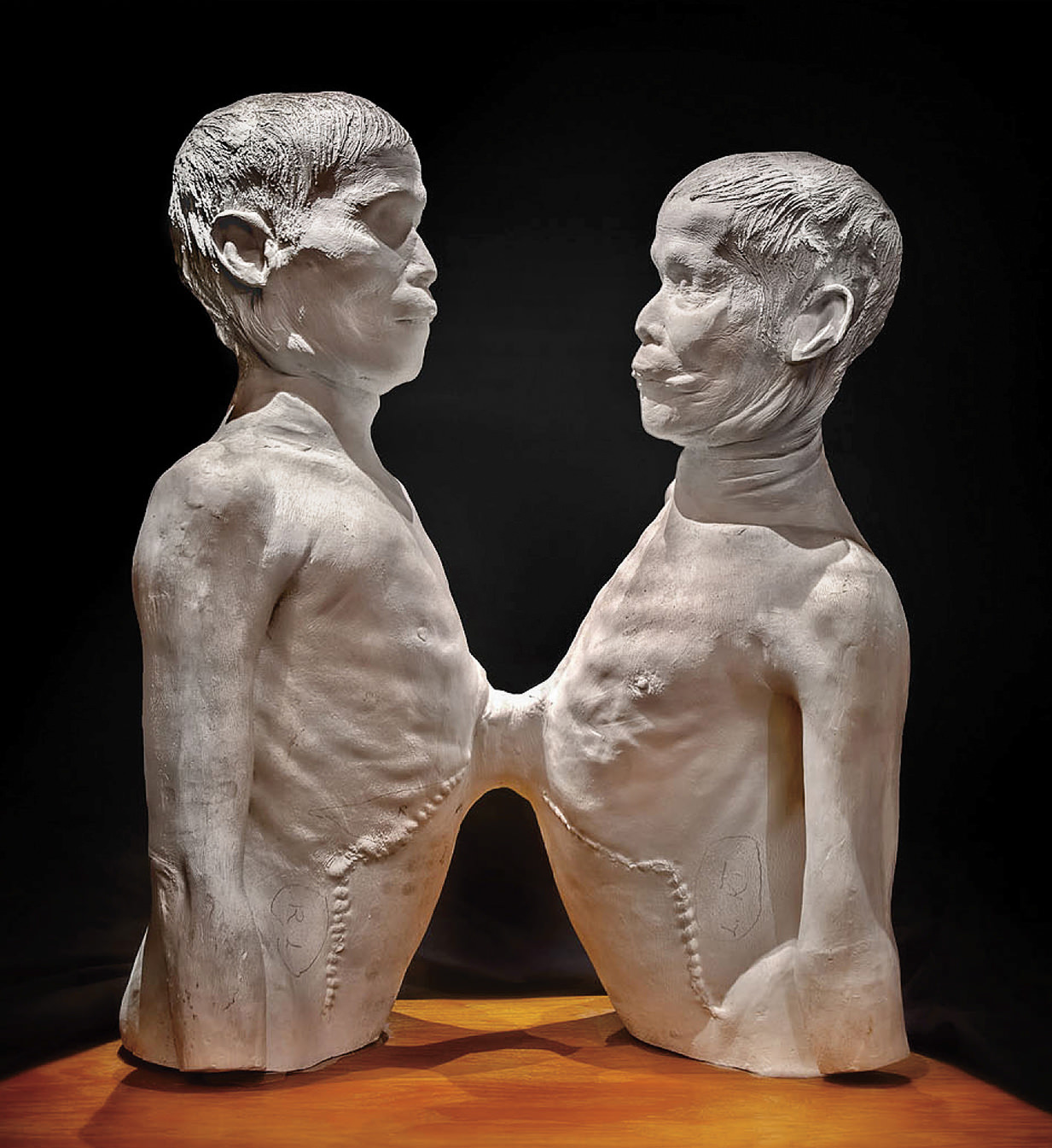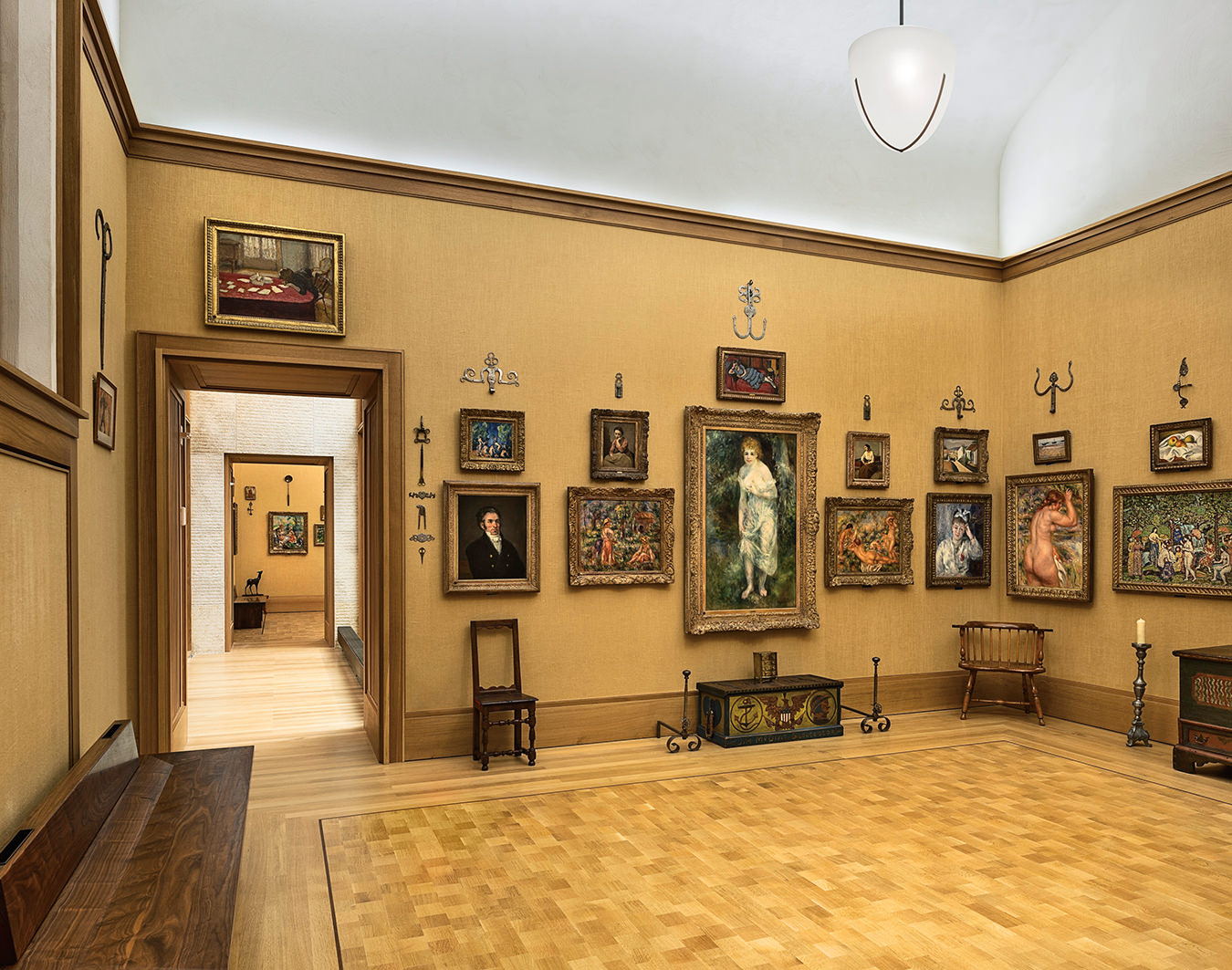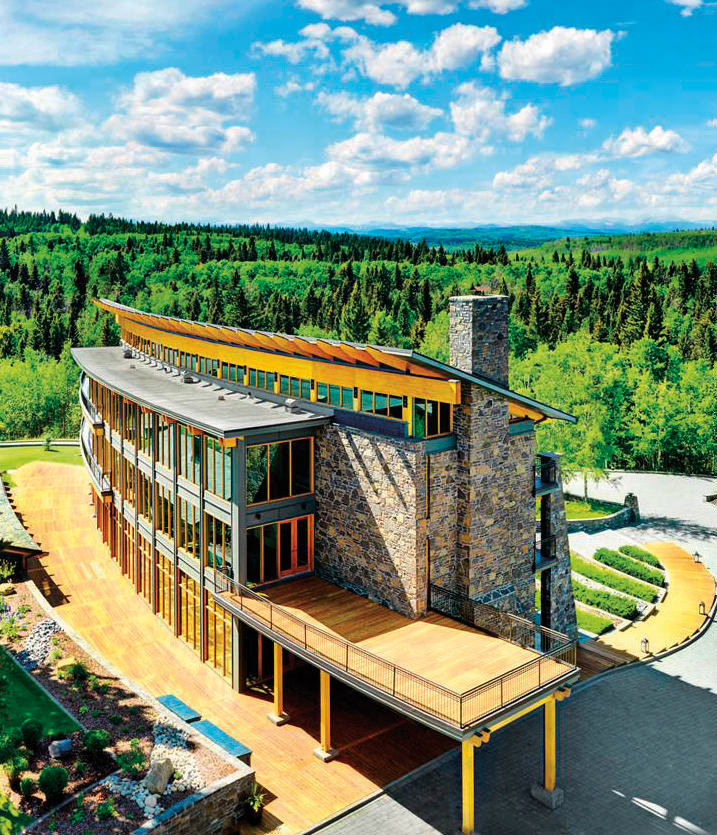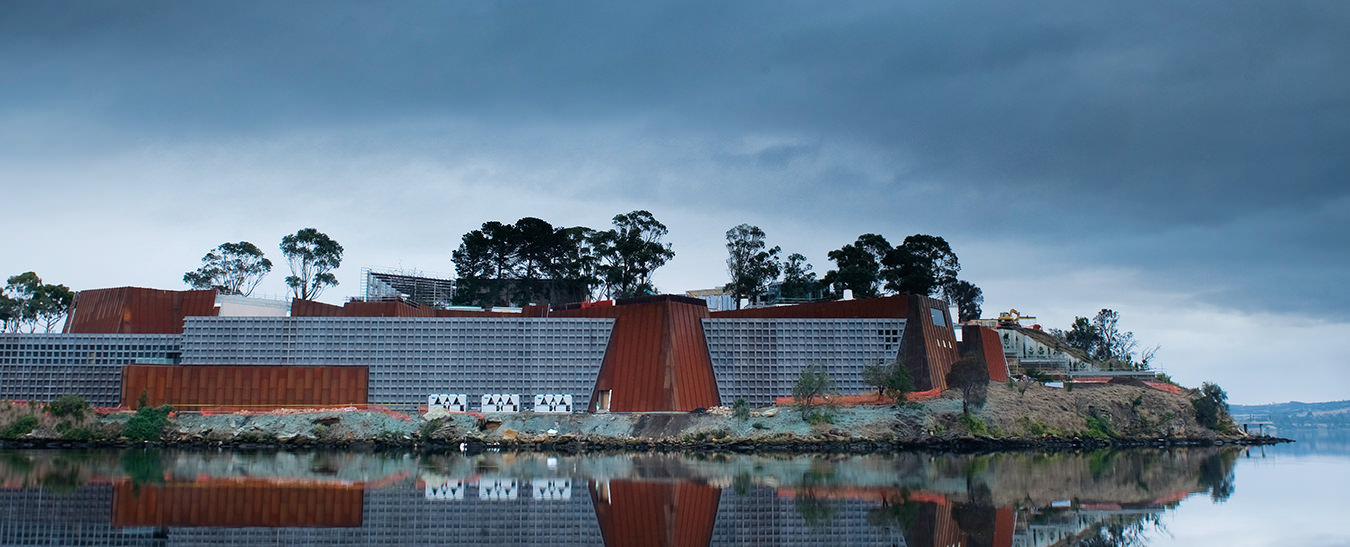-
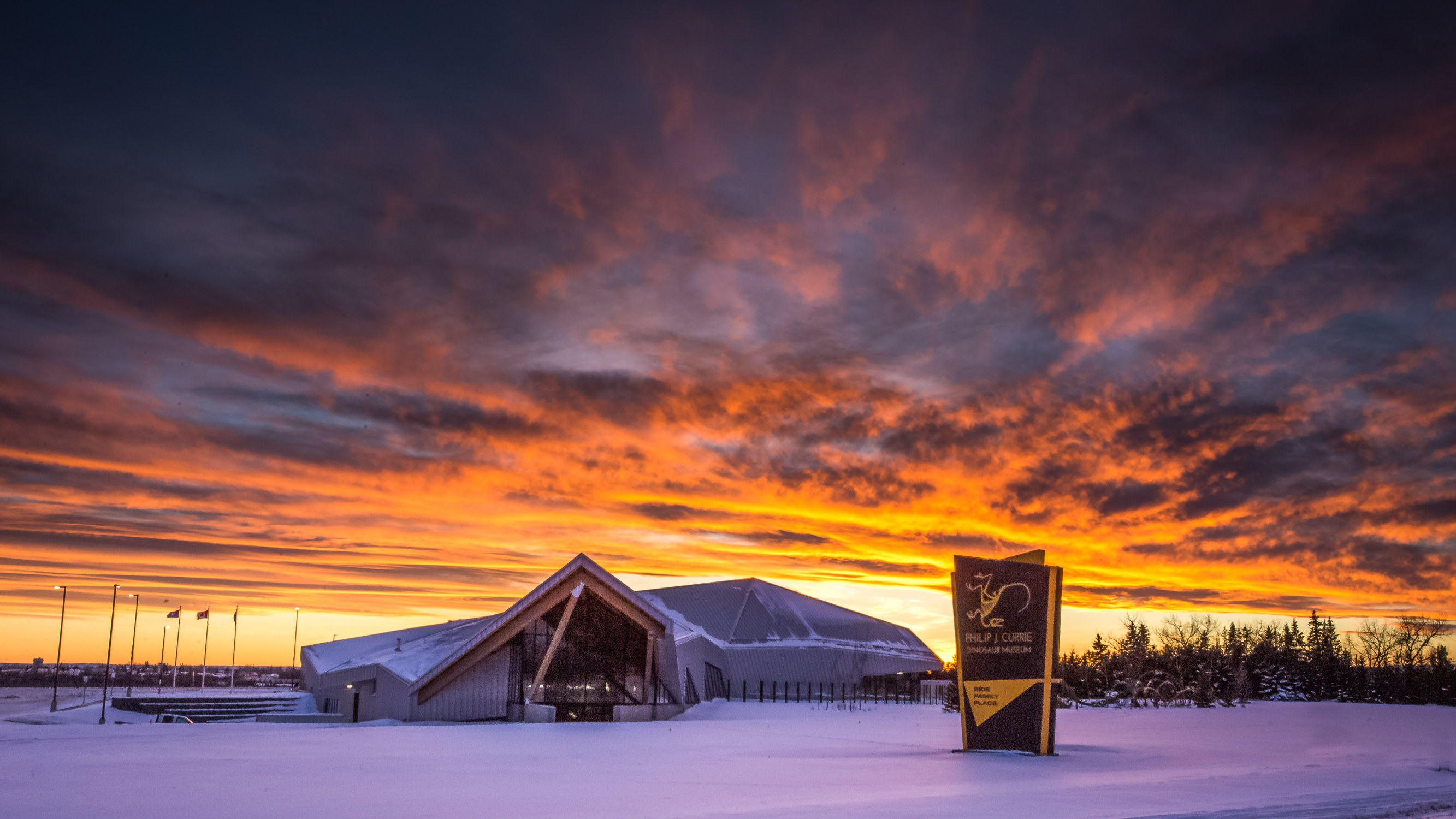
The building was designed by Teeple Architects. Photo by Marilynne Grubb.
-

Skeletons of mososaurs and plesiosaurs are suspended from the ceiling.
-

Augmented Reality Platforms are used to bring skeletons to life.
-
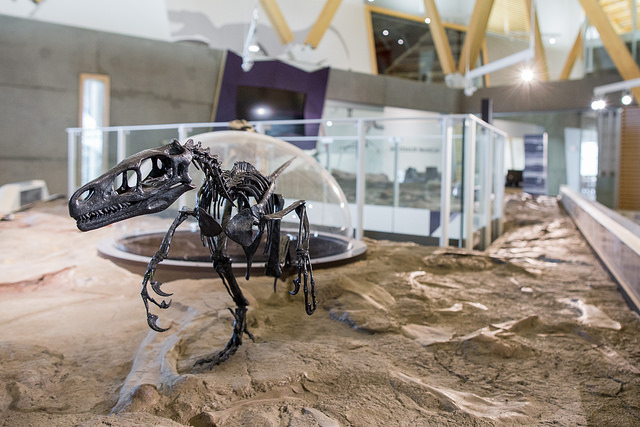
Guests can crawl through a dig tunnel, and emerge from a dome bubble eye.
-
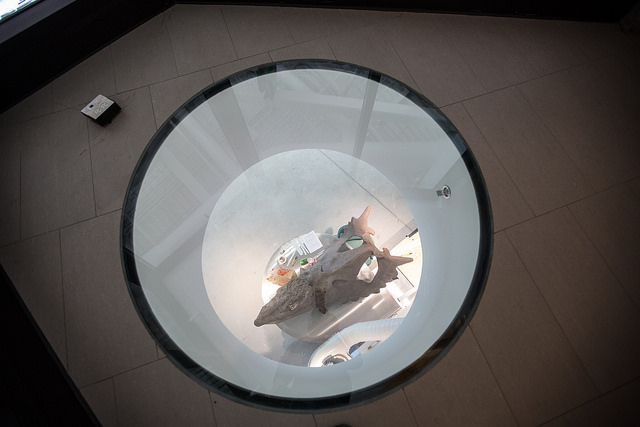
Peering down offers a glimpse into skeletons being prepared.
-
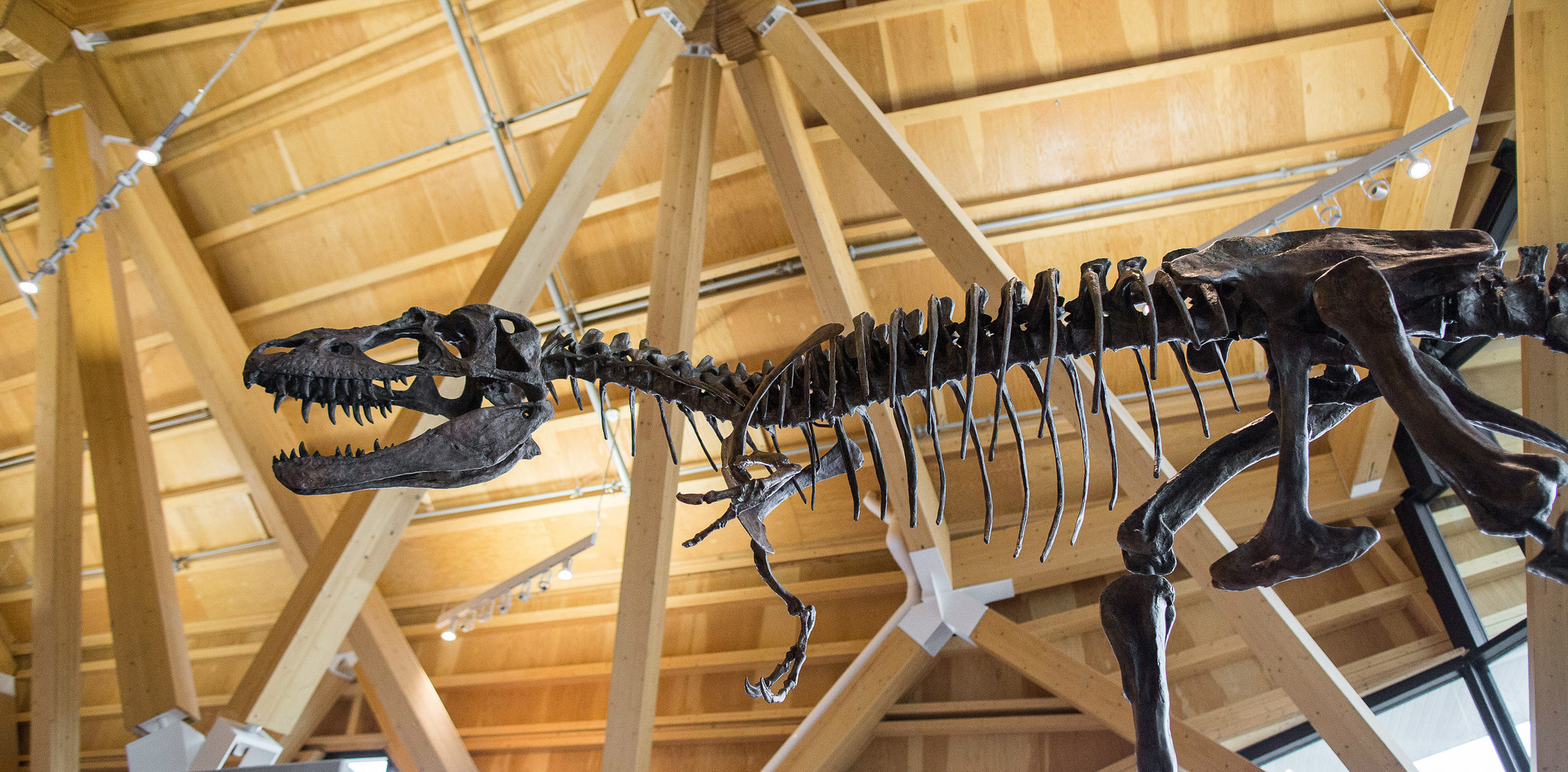
The museum holds fossils of extinct creatures exclusive to Alberta.
Dinosaurs in Alberta
The Philip J. Currie Dinosaur Museum.
Upon entering the Philip J. Currie Dinosaur Museum in Wembley, Alberta, visitors descend from the mezzanine to a gallery where they are dwarfed by gargantuan skeletons of mososaurs and plesiosaurs suspended from the ceiling. Since opening in September 2015, the museum has welcomed over 120,000 guests and received nine awards in its first nine months, including the most recent 2016 Prairie Design Award for Excellence. The Teeple Architects-designed museum has come very far very quickly from its primordial beginnings as digital renderings, and it isn’t slowing down.
Radically different from any other Canadian museum, the Dinosaur Museum uses a combination of traditional skeleton displays and modern technology. For instance, the Augmented Reality Platforms on the mezzanine allow users to rotate screens mounted on pivoting bases to focus on a suspended skeleton. Once focused, a touch screen is activated, bringing everything to life: the skeleton is fleshed-out and the creature is placed in a computer-generated ecosystem to move in as viewers look on. “It is humbling and gratifying to see so many visitors actively engaged in the galleries,” says museum president George Jacob, who has been at the helm of the organization since opening.
Interactivity continues in the bone-bed exhibit where parents and children crawl through a dig tunnel, and emerge from a dome bubble eye, surrounded by skeletons of small predators “making for a perfect photo-op that is widely used on social media,” says Jacob. Further into the gallery stand five newly-named specimens discovered in Alberta that have never been reconstructed anywhere else in the world, all of which are enhanced by resources from the collections of the University of Alberta, the Royal Tyrrell Museum, and the Royal Ontario Museum.
“It is humbling and gratifying to see so many visitors actively engaged in the galleries,” says museum president George Jacob.
Fossils that are exclusive to Alberta continue to be spotlighted in the Devonian Gallery. Since ancient Alberta was once submerged undersea, the gallery gives a glimpse into the types of marine creatures and corals that lived 360-million years ago. Ties to the museum’s location continue in the Alberta Today exhibit where focus is put on the importance of geology and paleontology to the province’s modern economy, but of course the latter is what visitors go wide-eyed for. And for a look behind-the-scenes, they need only peer down through a glass panel in the Fossil Lab to view researchers working on real bones, preparing them for display.
Further, helicopter rides are offered to take visitors out to one of the densest bone beds of horned dinosaurs in the world. Flights take place on a daily basis, making the museum the only one in Canada to offer such an experience.
“[We intend] to add more interactive and immersive exhibits laced with holograms and laser projections and create leading edge traveling exhibits,” says Jacob on the future of the museum. With plans also being drawn up for an IMAX theatre, a convention centre, and an annex for visiting scholars, it seems the only thing the Philip J. Currie Dinosaur Museum is missing are living, breathing dinosaurs.
Philip J. Currie Dinosaur Museum, 9301 112 Ave, Wembley, AB T0H 3S0.

